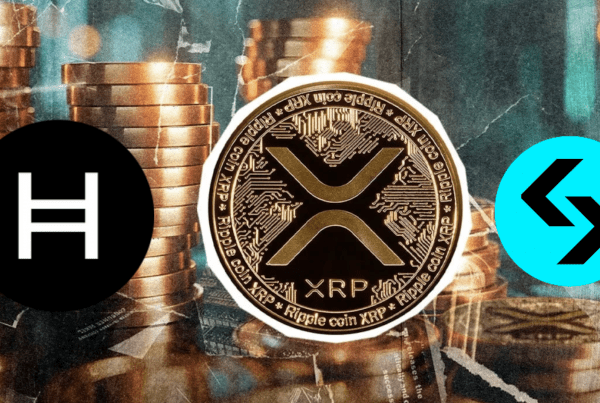
NFTs will likely go down as the revelation of 2021. Non-fungible tokens (NFTs) are digital collectibles that first appeared on the internet in 2014. However, they gained massive traction in 2021 and are more or less mainstream now. They are also the backbone behind another hot trend, metaverses. These are digital worlds where users can explore, socialize, and transact similarly to how they would do so in the real world.
Many metaverses exist, with the most popular ones operating on the Ethereum blockchain. For the uninformed, that is the digital ledger of the world’s second-most established cryptocurrency, Ether.
The Sandbox ranks pretty high among these community-driven virtual shared spaces. It originally got released in 2012 by game studio Pixowl as a mobile app for iOS and Android phones, and three years later, it made its PC debut on Steam. In 2016, Pixowl unleased a sequel titled The Sandbox Evolution, and in 2018, the company got acquired by Animoca Brands. Animoca was the one who decided to morph the game into a blockchain-based metaverse where users could monetize their in-game creations. In May of 2019, they raised $2.5 million to develop this project, which is booming with over one million active users.
How Does the Sandbox Work?
As experienced gamers know, a sandbox game is a term that refers to a gaming product that features a vast map that users can freely roam. Similar to other metaverses like Decentraland and Somnium Space, the Sandbox also exists on the Ethereum blockchain. That means that the tokens or digital assets available for trading in this virtual world are Ethereum ones. Thus, all transactions occurring in the Sandbox get recorded on Ether’s digital ledger.
The graphics in this world are akin to those of Minecraft. They are low poly 3D ones to save on bandwidth and processing power. The project does not aim to inspire visual awe. Its goal is to build an MMO/MMORPG gaming universe with a fledgling token economy. It seems to be heading in the right direction as the value of the Sandbox map increased five-fold in 2020, jumping from $5 million to $25 million in the previous calendar year.
To get started, all users have to create their avatars before diving deep into traversing this ecosystem. There is no fixed goal here per se. The overall gameplay revolves around players sharing experiences and taking advantage of their creativity and investment opportunities.
How Can Users Make Money in This Virtual World?
Simply put, users can turn a profit here by trading the virtual goods that they create. This world’s in-game currency bears the name – SAND, and it is an ERC-20 utility token. Users can buy SAND via fiat money, and they can then use it to purchase items, customize their avatars, play games, access new levels, and more. SAND is what powers the Sandbox transaction ecosystem, and it also serves as a governance token. Meaning, the Sandbox is a decentralized autonomous organization, and SAND allows its holders to provide input on how things function in this world.
Users can also use SAND to buy ASSETS and LANDS, which are ERC-721 tokens (NFTs). ASSETS refers to elements that add to the map level design or get used as equipment by avatars. LANDS are digital plots that are 96×96 meter squares. Only 166,464 pieces of LAND exist. Similar to Decentraland, users can combine multiple plots to create one property called an Estate. They can then build vast structures on top of these Estates and run businesses in them. For example, Decentraland is home to the world’s first virtual casino owned by Atari. It provides games equivalent to those available at land-based venues that users can play for tokens. They can then swiftly convert their in-game currency for fiat money at an exchange after landing a win. That is essential, as withdrawals without hassle are critical in the casino industry. Some users in these metaverses have gotten so creative that they run virtual nightclubs that feature live musical performances. So, there are many money-making possibilities here depending on how crazy it gets.
Those not interested in digital real estate and running in-game businesses can focus on creating ASSETS like motorbikes, animals, avatars, or weapons. They can later sell for a wide range of prices on the Sandbox Marketplace as NFTs. Remember scarcity and uniqueness is crucial in attracting attention and keeping sales prices up.
To Sum Up
Currently, The Sandbox ranks in the top five blockchain metaverses. It attempts to change the dynamic between gamer and platform by adding the potential for players to monetize their in-game creations. Concept-wise, nothing sets this virtual world apart from its competitors, and it is these platforms’ popularity that drives the value of their tokens.
About the Author
Shelly Schiff has been working in the gambling industry since 2009, mainly on the digital side of things, employed by OnlineUnitedStatesCasinos.com. However, over her eleven-year career, Shelly has provided content for many other top interactive gaming websites. She knows all there is to know about slots and has in-depth knowledge of the most popular table games. Her golden retriever Garry occupies most of her leisure time. Though, when she can, she loves reading Jim Thompson-like crime novels.



